
Navicular disease
Riders who have a horse with navicular disease they often ask me:
- Can Straightness Training help?
- Is ST good for my horse who has navicular syndrome?
- Are there any restrictions for such horses?
Before I answer this, let’s first dive into the most common cause of this ‘disease’.
Diagonal imbalance
When your horse is diagnosed ‘navicular disease’ on the front leg – right, or left, or both front legs – this might have it’s origin in the diagonal imbalance of the horse.

Diagonal imbalance is a consequence of other dimensions of natural asymmetry:
- A horse is left-bended or right-bended,
- left- or right-handed,
- has a pushing and a carrying hind leg
- and its shoulders are narrower than its hips.
In movement, this has consequences for the position of the horse’s center of mass: it will shift diagonally towards the strongest front leg.
And when the rider’s weight is added and also starts to shift towards this front leg, this can cause overload of this front leg, and that can lead to navicular disease.
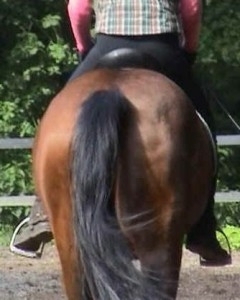
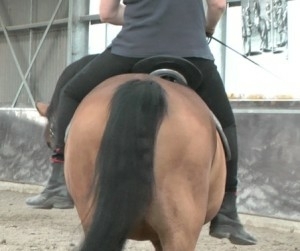
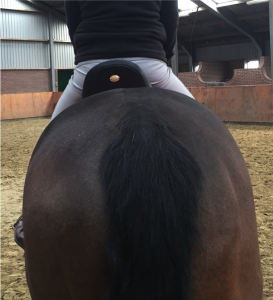
Therefore, navicular disease is almost always an effect of improper training and riding.
Now most left bended horses are also right handed, and therefore they often carry more weight with the right front leg – and vice versa.
So when a horse is diagnosed navicular disease on the right front leg it’s often times a left bended horse. And when it’s diagnosed on the left front leg, the horse is often times a right bended horse.
Vertical imbalance
Also the vertical imbalance plays an important role when it comes to navicular disease. Especially in trot and canter the load on the inside front leg is increased because of the vertical imbalance.

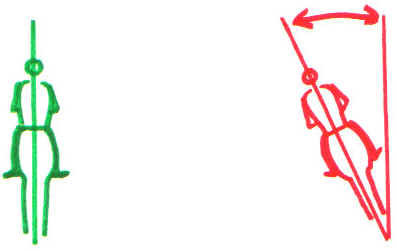
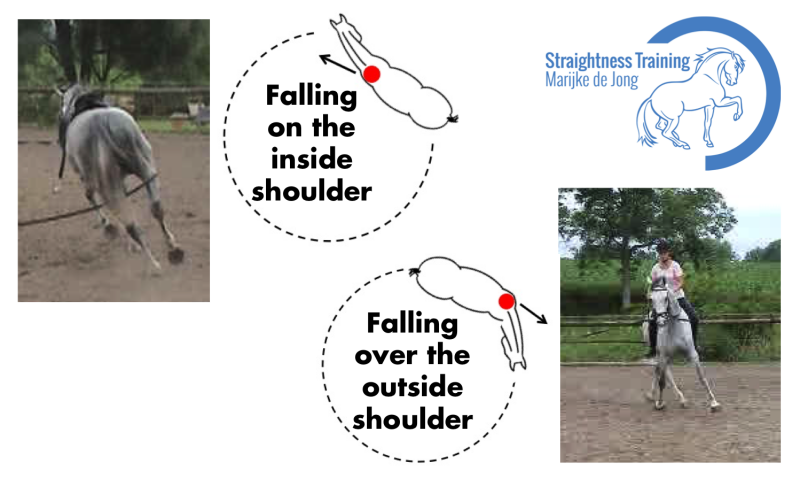
Riding a horse and longeing a horse without proper turning is the best way to get your horse lame. Because than there is no proper LFS, the horse stiffens his back and body, is falling on the inside shoulder, is horizontally, vertically, diagonally out of balance, is pivoting on the front legs in the turn etc.
The solution is: start doing groundwork to work on a proper lateral bend, a proper forward down tendency and a proper stepping under with the inside hind leg so the horse learns how to TURN on a circle instead of FALLING through the circles, because this stresses not only the front legs but also the back of the horse. Only when the horse has learnt how to turn with proper support from the hind legs, horse can carry a rider properly, without overstraining the front legs.
Don’t fight the symptoms
As already said, navicular disease is almost always an effect of the natural asymmetry and improper training and riding. Because of improper riding and training the horse will remain out of balance, therefore the back will stiffen and the front legs will be overstrained and this might lead to inflammation and lameness.
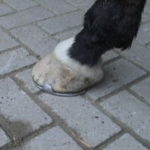 Giving the horse a pause from work, painkillers, anti-inflammatory medication, injections of corticosteroids into the coffin joint, cutting the nerves in the naviculur region, corrective shoeing are remedies to fight the symptoms, but they are not conclusive and often not appropriate remedies to address navicular disease.
Giving the horse a pause from work, painkillers, anti-inflammatory medication, injections of corticosteroids into the coffin joint, cutting the nerves in the naviculur region, corrective shoeing are remedies to fight the symptoms, but they are not conclusive and often not appropriate remedies to address navicular disease.
That’s because they do not address the cause, only the symptoms. So take care not to fight the symptoms, address the cause: the natural asymmetry and the improper way of training and riding.

